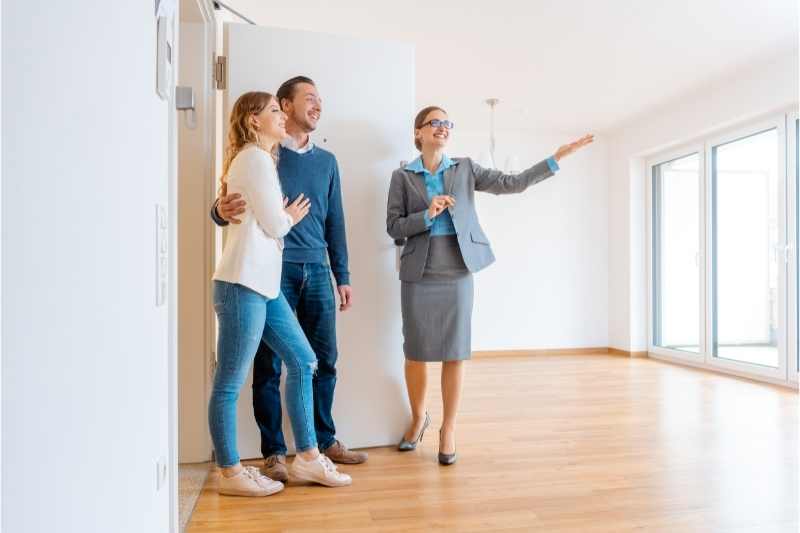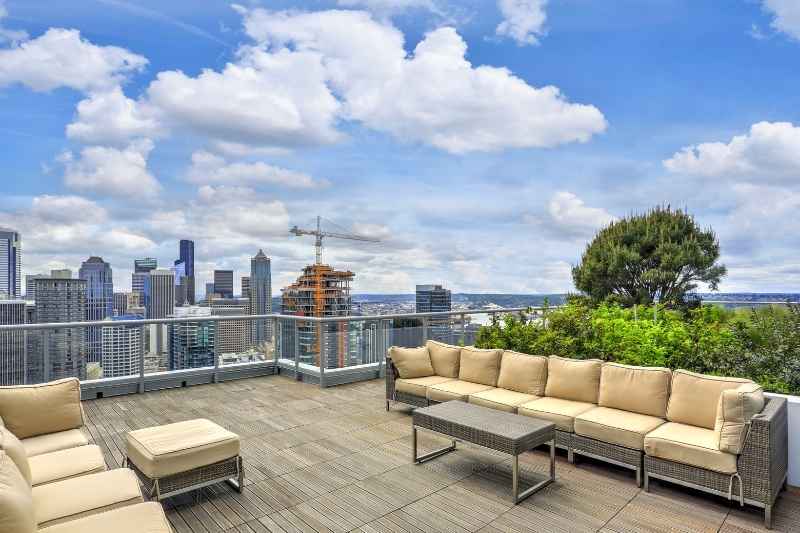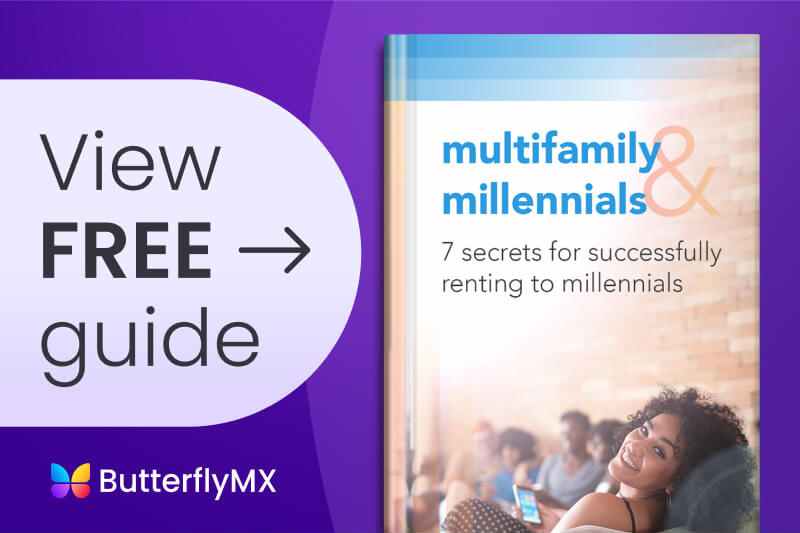
Apartment showings are an essential marketing strategy to attract new residents and lower your property’s vacancy rates. A lot of attention is placed on selecting the right residents from a random applicant pool. However, it’s equally important to curate the best touring experience possible to receive quality applicants.
In this post, we’ll outline the importance of apartment showings. Next, we’ll cover some tips for attracting great residents. Finally, we’ll go over what to do after an apartment showing.
In this post, we discuss:
- What is an apartment showing?
- Why is it important to hold apartment showings?
- 5 tips for a successful apartment showing
- What should you do after an apartment showing?
What is an apartment showing?
An apartment showing is when a prospective resident is given a tour of an available unit in the hopes that they will like it and apply to live there. Apartment tours are usually conducted by property managers, real estate agents, or landlords. Some buildings even provide virtual tours that prospective residents can conduct remotely, or self-guided tours where the prospect can physically tour the unit without a staff member present. Showings may occur up to three months before a former resident moves out of a unit.
Why is it important to hold apartment showings?
Holding an apartment showing is the best way to market your property directly to an interested party. You get a hands-on chance to advertise the greatest benefits your property offers. Also, you can go over your expectations from a resident. Then, you can personally vet whether a resident is a good fit for your building.
The primary goal of apartment tours is to give potential residents a glimpse of what it’s like to live at your property.
During the apartment viewing, your prospective resident will also evaluate you and your staff to get the feel of the resident experience at your property. So, it’s paramount that you put your best foot forward during these showings.
Learn how ButterflyMX self-guided apartment tours work:
How should you set up an apartment showing?
You should advertise your property on several listing sites and through social media. From there, prospective residents will reach out to you to schedule a time for a showing.
During your initial contact with a resident, it’s important to answer any questions they may have about the property. That way, if anything is a dealbreaker for them, they’ll learn in advance and you won’t waste your time with a showing.
You should take extra care to be flexible when booking the showing. Give prospective residents a variety of dates and times to choose from. Then, make sure you arrive at the building a few minutes early.
5 tips for a successful apartment showing
Deciding what to focus on during the showing depends on your unique property and what your building has to offer. However, these tips will help you prepare in advance for the showing. We’ll also prepare you for what to expect during the showing and how you should react.
Bonus tip: Dress appropriately when you show apartments. Smart casual attire is best. Remember — if you look disheveled, your building will look disheveled.
Here are the top 5 tips for a great apartment showing:
- Have the essential information readily available
- Highlight key features and amenities
- Emphasize security
- Prepare to answer questions
- Don’t try to oversell
1. Have the essential information readily available
Once you and the applicant have agreed on a time to meet for a tour, it is time for you to prepare. One key tip is to have important information readily available, perhaps on your property’s website and in physical handouts.
In fact, having handouts allows applicants not only to take something physical home with them but it allows you to move through the tour more efficiently because they’ll have the answers to some questions already available.
Handouts should include:
- Resident rules and policies
- A list of amenities
- Monthly expenses — in addition to rent
- Unit floor plans and square footage
- Security deposit policies
- Parking policies
Bonus tip: Include interesting facts and nearby attractions. This is another great way to give applicants a feel for the area and what will be around them.
This portion of your packet can include a list of:
- Public transportation options
- Grocery stores
- Schools
- Fitness centers
- Hiking trails
- Museums
Lastly, it’s important to include a reliable way for applicants to get in touch with you. Your contact information should be easy to locate in this packet.

2. Highlight key features and amenities
Make a point to highlight the features and amenities that make your property stand out. Unless your units are significantly bigger and cheaper than the local average, this will likely be a deciding factor in whether a resident chooses your property.
You should highlight amenities such as:
- Fitness centers
- Pools
- Recreation rooms
- Outdoor recreation areas
- Indoor lounges
- Gardens
- Laundry facilities
- Pet policies
There are also likely many features that are unique to units within your property. Don’t assume that prospective residents will know this. Instead, go over what makes your unit special. Further, be sure to properly stage the apartment before you show it off.
Features to highlight can include:
- Unique architecture
- Raised ceilings
- Square footage
- Smart technology including thermostats, fridges, sinks, and windows
- Walk-in closet space
- Heating/cooling units
- Window lighting
- Fire escapes
- Distance to stairs and/or elevator

3. Emphasize security
Most people are highly concerned about crime and place a lot of importance on feeling secure in their homes. From the moment your prospective residents enter your property, you should highlight your security features.
Other than security cameras, one of the biggest security features you should draw your prospects’ attention to is your access control system.
An ideal access control system in your building will:
- Have a camera that monitors everyone who enters the building.
- Only allow people with the right credentials access to the building.
- Provide an alternative to physical credentials such as keys and key cards.
- Give residents the ability to let guests and delivery personnel into the building.
- Have a mobile app that residents can use to manage access.
You should also highlight how your building handles deliveries and prevents package theft — preferably through a package room.
Additionally, make sure to highlight how easy any security and access control technology is to use at your property. Detail how residents can easily access the property using their smartphones or NFC tags in key cards or fobs.
4. Prepare to answer questions
You’ve provided a packet, and you’re hoping your residents have done their homework on the building. Most likely, they’re still going to ask a ton of questions. So, it’s important to be prepared to answer them as clearly as possible.
Possible questions you should prepare for will likely already be in your packet. However, it’s still important to answer any questions you’re asked, rather than telling them to read the packet because that can come off as a little rude.
Questions you should prepare for include:
- The terms of their lease.
- Neighborhood noise levels.
- Who currently lives in the building.
- Trash pickup policies.
- Fire safety concerns.
- Building safety concerns.
- Roof access.
- What the building is like in all seasons.
5. Don’t try to oversell
During the showing, it’s important not to come off as condescending when talking about how your building compares to others. In fact, you shouldn’t mention other buildings at all during your tour.
Once you’ve highlighted the features that make your apartment building amazing, it’s important to give the prospect time alone. If you’ve shown the apartment to more than one person, they’ll definitely want privacy to discuss the unit together. They may want to go over what they both like and dislike — and they’ll feel less awkward if you’re out of earshot.
While you should make the next steps very clear in terms of your apartment application process, try your best not to be pushy. Often, people need to sleep on a big decision before committing.
What should you do after an apartment showing?
Once an apartment viewing is over, it’s important to follow up with prospective residents and thank them for their time. You can also remind them of the steps they’ll need to take to move forward in the application process.
Next, update your property management CRM to manage your new leads.
Once that’s complete, it’s time for the most important post-apartment showing step: preparing for the next showing!
Your first few showings may not convert to new leases. But the more you show the apartment, the faster you’ll fill any vacancies that you have.
Takeaways
- Apartment showings are the best way to market your property to interested residents directly.
- When scheduling a showing, market through social media or listing sites and always be flexible when booking dates and times.
- While showing off your building, provide a packet of information and highlight the building’s amenities and security systems. You should also be prepared to answer questions — without overselling your property.
- Once the showing is complete, send a follow-up to your prospects, update your CRM, and immediately prepare for the next showing.






